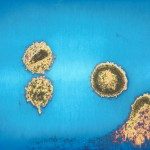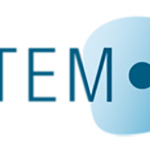Lien vers Pubmed [PMID] – 36146874
Lien DOI – 206910.3390/v14092069
Viruses 2022 09; 14(9):
Allo-HSCT with CCR5Δ32/Δ32 donor cells is the only curative HIV-1 intervention. We investigated the impact of allo-HSCT on the viral reservoir in PBMCs and post-mortem tissue in two patients. IciS-05 and IciS-11 both received a CCR5Δ32/Δ32 allo-HSCT. Before allo-HSCT, ultrasensitive HIV-1 RNA quantification; HIV-1-DNA quantification; co-receptor tropism analysis; deep-sequencing and viral characterization in PBMCs and bone marrow; and post-allo-HSCT, ultrasensitive RNA and HIV-1-DNA quantification were performed. Proviral quantification, deep sequencing, and viral characterization were done in post-mortem tissue samples. Both patients harbored subtype B CCR5-tropic HIV-1 as determined genotypically and functionally by virus culture. Pre-allo-HSCT, HIV-1-DNA could be detected in both patients in bone marrow, PBMCs, and T-cell subsets. Chimerism correlated with detectable HIV-1-DNA LTR copies in cells and tissues. Post-mortem analysis of IciS-05 revealed proviral DNA in all tissue biopsies, but not in PBMCs. In patient IciS-11, who was transplanted twice, no HIV-1-DNA could be detected in PBMCs at the time of death, whereas HIV-1-DNA was detectable in the lymph node. In conclusion, shortly after CCR5Δ32/Δ32, allo-HSCT HIV-1-DNA became undetectable in PBMCs. However, HIV-1-DNA variants identical to those present before transplantation persisted in post-mortem-obtained tissues, indicating that these tissues play an important role as viral reservoirs.



